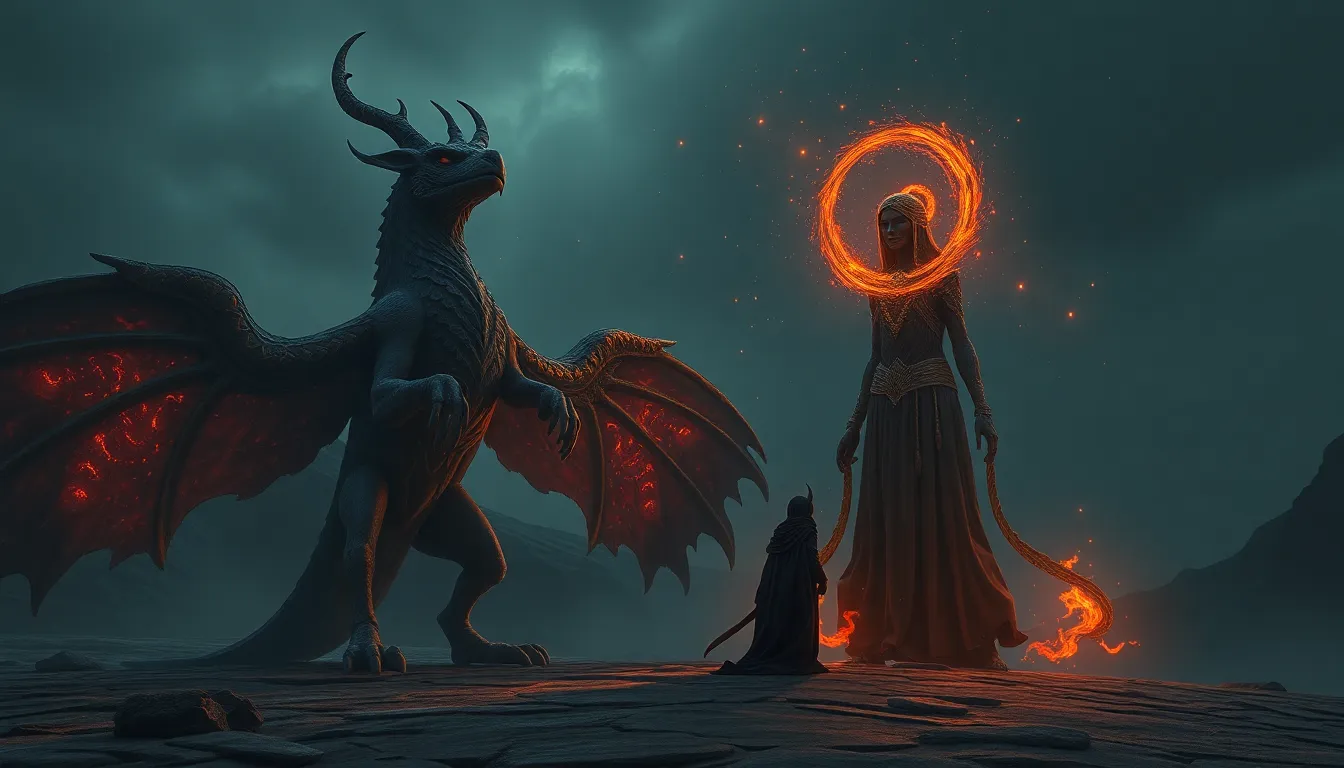The Enduring Appeal of Celestial Beings: Mythological Insights into the Human Condition
I. Introduction
Celestial beings, often depicted as gods, angels, or otherworldly entities, have captivated human imagination across cultures and epochs. These entities are often imbued with power, wisdom, and morality, serving as embodiments of ideals that societies strive to achieve. The significance of celestial beings in mythology extends beyond mere storytelling; they represent the aspirations, fears, and moral complexities inherent in the human condition.
This article aims to explore the historical context, symbolism, and psychological perspectives surrounding celestial beings, while also examining their role in cultural identity and modern reinterpretations. Through this exploration, we seek to understand why these mythological figures continue to resonate with us today.
II. Historical Context of Celestial Beings in Mythology
A. Ancient civilizations and their celestial narratives
Throughout history, ancient civilizations have created elaborate myths surrounding celestial beings. For instance:
- Egyptian Mythology: The ancient Egyptians worshipped a pantheon of gods such as Ra, the sun god, and Osiris, the god of the afterlife, reflecting their understanding of life, death, and the cosmos.
- Greek Mythology: The Greeks personified natural phenomena and moral concepts through gods like Zeus, Athena, and Apollo, illustrating the complexity of human experiences and societal values.
- Hindu Mythology: In Hinduism, celestial beings like Indra and Vishnu play crucial roles in narratives that explore dharma (duty) and karma (action), emphasizing the interplay between divine and mortal realms.
B. Evolution of celestial beings across cultures
As civilizations evolved, so did the narratives surrounding celestial beings. These beings often adapted to reflect the changing values, beliefs, and social structures of the cultures that revered them. For example, the transition from polytheism to monotheism in various societies often led to the reinterpretation of celestial figures, merging different attributes into singular divine representations.
III. The Symbolism of Celestial Beings
A. Representations of ideals and virtues
Celestial beings frequently symbolize ideals such as justice, wisdom, and compassion. They serve as moral compasses, guiding humanity toward virtuous behavior. For example:
- In Christianity, angels are seen as messengers of God, embodying purity and goodwill.
- In Buddhism, bodhisattvas represent selflessness and compassion, encouraging followers to seek enlightenment not just for themselves but for all beings.
B. The juxtaposition of good and evil in celestial narratives
Celestial beings also illustrate the dichotomy between good and evil. Myths often depict celestial figures contending with malevolent forces, emphasizing the struggle between light and darkness. This duality reflects human experiences of conflict, choice, and moral ambiguity.
IV. Celestial Beings as Mirrors of Human Experience
A. Human emotions reflected in celestial stories
The stories of celestial beings often mirror the emotional landscape of humanity. Celestial beings experience love, jealousy, wrath, and redemption, making them relatable figures in mythology. For instance, the Greek goddess Aphrodite embodies love but also jealousy, showcasing the complexity of human emotions.
B. Exploration of moral dilemmas through celestial characters
Celestial narratives frequently delve into moral dilemmas, prompting audiences to reflect on their own ethical choices. The story of Prometheus, who defied the gods by giving fire to humanity, raises questions about sacrifice and rebellion against authority.
V. The Role of Celestial Beings in Cultural Identity
A. Mythological figures as symbols of national and cultural pride
Celestial beings often serve as symbols of national identity and cultural pride. For instance, the figure of Quetzalcoatl in Aztec mythology represents wisdom and the duality of creation and destruction, embodying the cultural heritage of the Aztec civilization.
B. Celestial beings in contemporary storytelling and media
In modern storytelling, celestial beings continue to play significant roles. They appear in literature, film, and television, often reinterpreted to resonate with contemporary themes and issues. For example, the Marvel Cinematic Universe has reimagined Norse gods as superheroes, bringing ancient mythology into the modern entertainment landscape.
VI. Psychological Perspectives on Celestial Beings
A. Archetypes and their relevance in psychological theory
From a psychological standpoint, celestial beings can be seen as archetypes that reflect fundamental human experiences. Carl Jung’s theory of archetypes suggests that these figures embody universal symbols found in the collective unconscious, aiding individuals in understanding their own identities and struggles.
B. The impact of celestial mythology on collective consciousness
Celestial mythology influences collective consciousness, shaping societal norms and values. The stories we tell about celestial beings inform our understanding of morality, justice, and the human experience, guiding cultural evolution.
VII. The Modern Reinterpretation of Celestial Beings
A. How modern literature and film reinterpret celestial mythology
Modern literature and film have taken creative liberties with celestial mythology, often blending genres and themes. Authors and filmmakers reinterpret these beings to explore contemporary issues, such as identity, power dynamics, and existential questions. Notable examples include:
- The “American Gods” series, which juxtaposes traditional deities with modern societal challenges.
- The “Percy Jackson” series, which brings Greek mythology into the realm of young adult fiction, appealing to a new generation.
B. The resurgence of interest in celestial themes in popular culture
In recent years, there has been a resurgence of interest in celestial themes across various forms of media. This revival reflects a collective yearning for connection to the divine and the exploration of existential questions in an increasingly complex world.
VIII. Conclusion
A. Summary of key insights on the enduring appeal of celestial beings
The enduring appeal of celestial beings lies in their ability to encapsulate the complexities of the human condition. They serve as mirrors reflecting our ideals, dilemmas, and emotions, while also acting as symbols of cultural identity and collective consciousness.
B. Final thoughts on the significance of celestial mythology in understanding the human condition
As we navigate the challenges of modern life, the insights gleaned from celestial mythology remain profoundly relevant. These narratives encourage us to explore our values, confront our moral dilemmas, and connect with the deeper aspects of our humanity. In a world often marked by uncertainty, the stories of celestial beings remind us of the enduring quest for meaning, purpose, and understanding.



